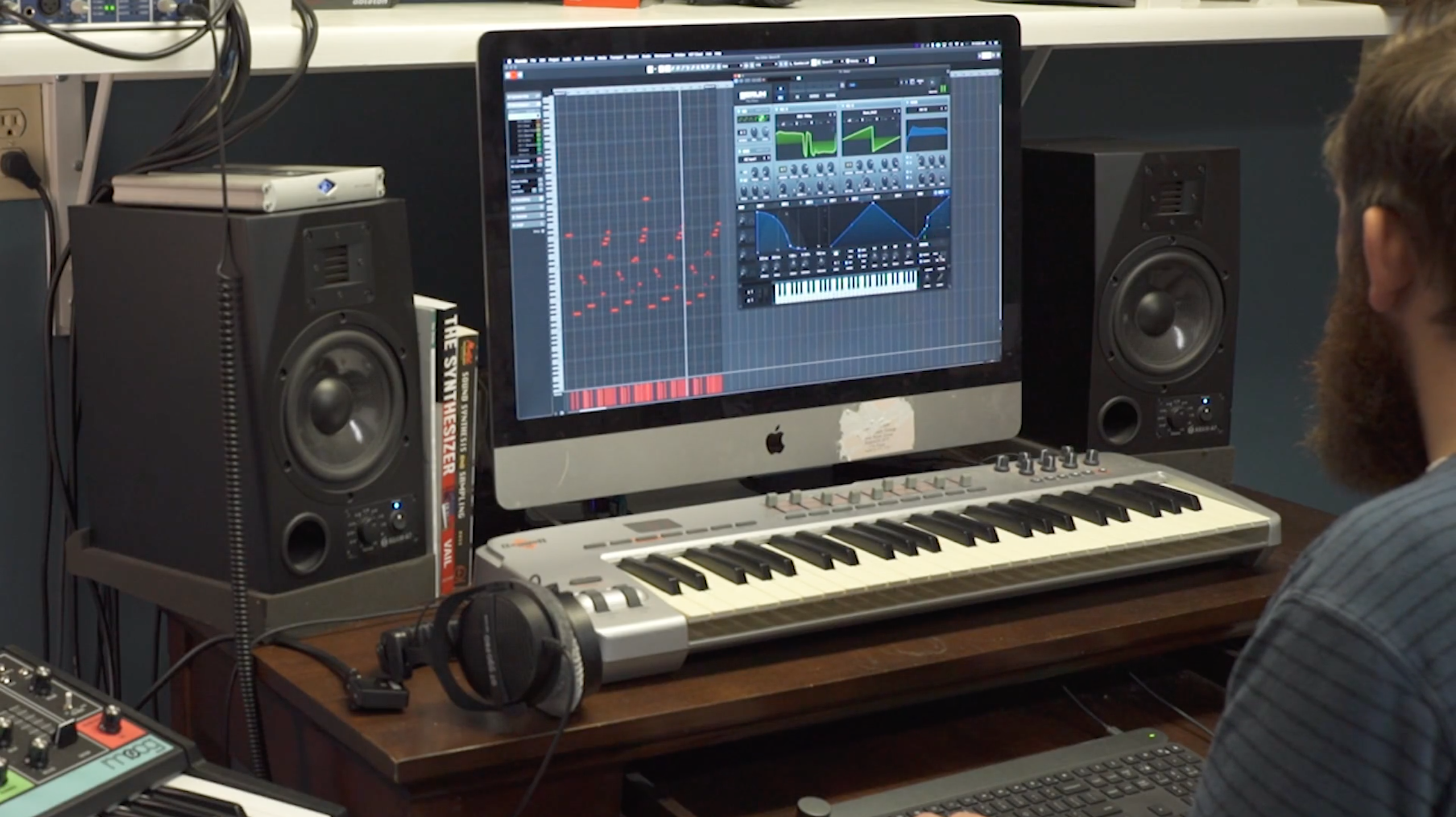
+ Learning about synthesis? Soundfly’s got a definitive new online course called Advanced Synths and Patch Design For Producers! Preview for free and subscribe for access.
My love of synthesis is well documented here on Flypaper. There’s just so much to explore, from digital to analog, computer-based to modular. Today, we’re going to take a look at modular synthesis as it’s used in the modern electronic landscape, and highlight its flexibility in studying the way that a wide variety of artists use it in an equally wide variety of genres.
While this isn’t really a piece to encourage you to buy a modular… be warned: By the end, you may have accidentally caught the synth bug!
But first, don’t forget to check out Soundfly’s online course, Advanced Synths and Patch Design for Producers, and learn how to move beyond presets to create a wide array of scintillating synth sounds for your productions.
Alessandro Cortini
Most publicly known for his time touring and recording with Nine Inch Nails, Alessandro Cortini was one of the key synthesists on the Live: With Teeth tour. His discography, production credits, educational positions, and influence on experimental electronic musicians are nearly unparalleled.
In the past few years, his solo project SONOIO has taken off in the LA area, and largely features work done in the Buchla format — a specific system of modules that codified the style of West Coast, additive and experimental synthesis. Cortini says that he takes inspiration from the constraints of a system designed by a singular manufacturer. To that end, here is a performance in the classic West Coast style, alongside the legend Don Buchla, himself.
Floating Points
Though originally associated with house and disco parties in the UK, Floating Points (Sam Shepherd) was an analog nerd all along. In a recent interview with RA, he details how he took out a huge loan in order to get the right console for mixing his music. The mixer was so big in his small apartment that he had to crawl underneath it to get to his bed.
His critically acclaimed full-length debut Elaenia is the pastiche of his musical history, combining dance floor heat with subtle, contemporary classical influence. How he gets there with electronics is in large part due to his Buchla synthesizer; in a similar style to Cortini’s performance, Floating Points conjures simple, harmonically rich and evolving textures from the synthesizer, but builds instrumentation around them to masterful effect.
Surgeon
Surgeon (Anthony Child) came to modular later on in his artistic life, relatively speaking. His musical roots date back to the earliest techno days in the UK, and he helped spearhead the now-burgeoning movement of stylistically unique dance music from central and northern England.
As one of the first DJs to embrace Ableton in the live environment, Surgeon has always been on the forefront of experimenting with new technology — and the burgeoning Eurorack market is no exception. After years of working “in-the-box,” Surgeon realized that hardware limitations were forcing him to exercise creativity within a specific set of parameters, and that in many ways those limitations were freeing from the paradox of choice. Now, he uses his modular synth as an accompaniment to his DJ sets, as well as a studio tool for creative expression.
Kaitlyn Aurelia Smith
Kaitlyn Aurelia Smith came to modular through a fortuitous route. Holed up in a friend’s garage to work on a post-graduate music project, she was handed a Buchla synthesizer as part of her explorations. Famously frustrating for beginners, the synth just wouldn’t make noise for weeks on end, until finally she started to understand its quirks. From there, the rest was simple: Learn more, use more, and find an artistic voice in the machine. Kaitlyn’s most recent album, EARS, treads a fine line between ambient, electronic experimental, and Animal Collective-style indie.
Check out a video of her modular system in action here.
John Chantler
Continuing down the droney, soundscapey rabbit hole, we’ll find the Sweden-based Aussie John Chantler. Better known for his recordings and live performances with church organs, John is attracted to the modular as an inherently complementary sound system to the organ and more traditional instrumentation and composition.
His unorthodox workflow means that musical forms are mixed, matched, and sometimes completely inverted in the process of arriving at subtle, evolving movements that tread the many facets of analog.
Lichens
Lichens is the solo moniker of Robert Aiki Aubrey Lowe, who himself has a long history with noise, drone, and doom metal, from performing and recording with Om to 90 Day Men. Lichens, however, takes a more improvisational, live format, taking Lowe’s voice and channeling, sampling, and looping it through the tangled wires of his modular rigs.
Though many artists choose to travel with their modulars pre-patched, Lowe is very intentional about arriving at each gig with a completely blank slate, giving him the freedom to take the performance of voice and machine wherever the moment demands. Not coincidentally, Lowe is heavily involved with Control, the modular synth outpost in Brooklyn, and is happy to pass along his wealth of knowledge to anyone interested.
Scanner
Scanner, a.k.a. Robin Rimbaud, isn’t immediately known for his work with modular; rather, Scanner is known for his namesake compositions and soundscapes involving police scanners, hacked phones, tape recordings, and short wave radio.
Of late, however, Rimbaud has taken to the Eurorack format and has found creative inspiration in its famously unpredictable nature. In a 2015 interview he said of one of his sampler modules, “What I’ve done is just use it as a resource but without knowing what’s in there. I like this almost John Cage idea of this thing coming through but I don’t know quite what to anticipate.”
Richard Devine
Last but not least is Richard Devine, an artist who continues to defy genre but is nevertheless consistently thought of as one of the stalwarts and figureheads in the modular scene. From demoing new modules, to contributing to music software, to helping implement software solutions for hardware control, Devine has been involved in nearly all of it.
Performance-wise, Devine sits solidly within the Warp catalogue, having worked with Autechre and Aphex Twin, amongst others. Channeling this style of IDM, alongside clear experimental electronic influences, his output is decidedly rapid-fire, mostly modular, and not to be missed.
There are a nearly infinite number of artists out there doing cool things with synths. If we missed your favorite, share their work in the comments below!
Want more?
Continue learning with hundreds more lessons on mixing, DIY home audio production, electronic music recording, beat making, and so much more, with Soundfly’s in-depth online courses, like The Art of Hip-Hop Production, Modern Mix Techniques, and of course Advanced Synths & Patch Design (to name a few). Subscribe to get unlimited access here.





